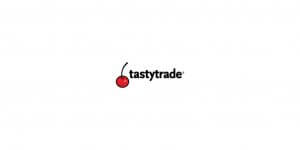US Court of Appeals remands HFT case targeting top exchanges
The United States Court of Appeals for the Second Circuit ruled that the plaintiffs have sufficiently pled that the exchanges created a fraudulent scheme that benefited HFT firms and the exchanges themselves.

The United States Court of Appeals for the Second Circuit has disagreed with a ruling of the New York Southern District Court in favor of BATS Global Markets, Inc., the Chicago Stock Exchange Inc., the Nasdaq Stock Market, LLC, and the New York Stock Exchange LLC (NYSE). On Tuesday, March 20, 2018, the judgment of the District Court was vacated and the case was remanded for further proceedings consistent with the Opinion of the Court of Appeals.
The lead plaintiffs, institutional investors who traded on the defendant stock exchanges during the class period, allege that the exchanges misled them about certain products and services that the exchanges sold to high‐frequency trading (HFT) firms. This, in turn, purportedly created a two-tiered system that favored those firms at the plaintiffs’ expense. The USCA concluded that the defendant exchanges are not entitled to absolute immunity, and the District Court erred in dismissing the complaint.
The exchanges targeted in this case are registered with the Securities and Exchange Commission (SEC) as self‐regulatory organizations (SROs) – they function both as regulators and regulated entities. As regulated entities, they are subject to SEC oversight and must comply with the securities laws as well as the exchanges’ own rules; and as regulators, they are delegated the authority by the SEC to oversee and discipline their member broker‐dealers.
Plaintiffs contend in this case that the exchanges created three products and services for “favored” HFT firms – proprietary data feeds, co-location services, and complex order types, in order to provide these firms with more data at a faster rate than the investing public and thereby to attract HFT firms to trade on their exchanges. For instance, according to the plaintiffs, the exchanges have created “hide and light” orders that allow traders to place orders that remain hidden from the ordinary bid-and-offer listings on an individual exchange until a stock reaches a particular price, at which point the hidden orders emerge and jump the queue ahead of other investors’ orders.
On August 26, 2015, the District Court determined that it had subject matter jurisdiction over this case. It held that the exchanges were absolutely immune from plaintiffs’ allegations concerning the proprietary data feeds and complex order types, but not co-location services. The District Court also concluded that, even if the exchanges were not absolutely immune, the plaintiffs had failed to state a claim for a violation of § 10(b) and Rule 10b‐5 based on a manipulative scheme.
The District Court therefore granted the exchanges’ motion and dismissed the complaint. Plaintiffs timely filed an appeal.
The USCA found that the exchanges were not entitled to absolute immunity in this case. When an exchange engages in conduct to operate its own market that is distinct from its oversight role, it is acting as a regulated entity – not a regulator. Although the latter warrants immunity, the former does not. Accordingly, the Court of Appeals concludes that the exchanges, in providing the challenged products and services, did not “effectively stand in the shoes of the SEC” and therefore are not entitled to the same protections of immunity that would otherwise be afforded to the SEC.
Finally, the Court of Appeals disagrees with the district court’s dismissal of this action under Rule 12(b)(6) for failure to state a claim. The USCA agreed with the plaintiffs have sufficiently alleged that the exchanges engaged in manipulative conduct because the complaint specifies what manipulative acts were performed, when they took place, which defendants performed them, and their effect on the market.
In doing so, the exchanges used the HFT firms to generate hundreds of millions of dollars in fees and established a system that, unbeknownst to the plaintiffs, catered to the HFT firms at the expense of individual and institutional traders.
Two alternative trading venue entities, Barclays PLC and its subsidiary, Barclays Capital Inc., were also defendants in this action, but they are not parties to the appeal.









